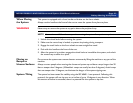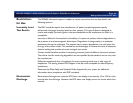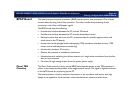
M2540-92000-01 A M2540 Ultrasound System Field Service Manual Page 40
Theory of Operation: TR Boards
VCR-Option Components in the PC
The VCR option includes several cards inside the PC and an adapter that connects to the SVGA
output of the PC’s graphics adapter board. See Figure 4-1 on page 48 for a detailed
representation of how the VCR option’s components function in the ultrasound system.
The following cards are part of the VCR option, and reside in the PC’s PCI slots:
• A sound card that receives audio from the VCR, and supplies sound to the VCR
• A video capture board that receives S-Video signals from the VCR
• An SVGA-to-S-Video card that converts the SVGA signal from the graphics adapter board (in
the AGP slot) to S-Video for the VCR
• An SVGA adapter that connects the graphics adapter board to the SVGA-to-TV video card
and to the monitor
See “VCR Option Parts” on page 198 for a list of all the components of the VCR option.
Optional Drive-Bay Components
The PC’s drive bays accept the following components:
• The Physio module that provides ECG monitoring capability. The drive bay’s power connec-
tor powers the module, but the module does not use the drive bay’s data port. The module
communicates with the ultrasound system through a USB cable to the PC motherboard. See
“Physio Module Option” on page 43, and Figure 4-3 on page 51 for detailed information on
the Physio module.
• A magneto-optical disk (MOD) drive that allows archiving of images, studies, and reports on
removable disks. The MOD uses the drive bay’s data and power ports.
TR Boards
The M2540A’s e-box contains two transmit-and-receive (TR) boards. Each has a connector that
plugs into the motherboard and another connector that passes through the motherboard and


















